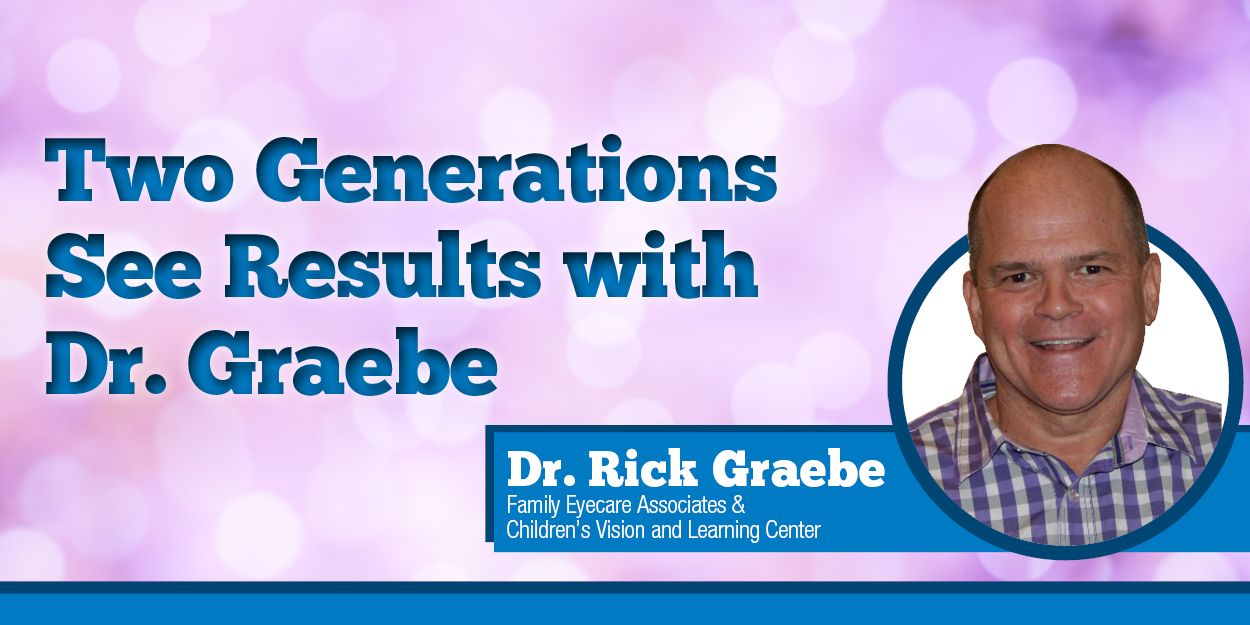Both Father, Daughter Benefit From Vision Therapy
Dr. Rick Graebe’s work with Vision Therapy has become so successful and well known throughout the state that the behavioral optometrist in Versailles is now treating a second generation of patients.
One such family includes Matt Norman and his 8-year-old daughter Katie. Matt is a pediatric cardio-vascular perfusionist, meaning he runs the heart-lung machine for patients while in surgery.
In his 20s, Matt experienced increasingly worse near-sightedness, especially in his right eye. As that eye grew weaker, his brain suppressed its function leading to a slight case of lazy eye.
Glasses helped only so much. Eventually, he experienced double vision when looking at far off objects.
His optometrist in Lexington, Dr. Allyson Lane, recommended a program of Vision Therapy with Dr. Graebe.
Vision Therapy is a type of physical therapy for the eyes, brain and body, and is an effective non-surgical treatment for many common visual problems such as lazy eye, crossed eyes, double vision, convergence insufficiency and some reading and learning disabilities.
Through neuro-cognitive training that creates new, permanent pathways in the brain, Vision Therapy can provide life-long benefits for the patient.
A year and a half ago, Matt began Vision Therapy with Dr. Graebe and his vision improved. Unfortunately, treatment was cut short due to an unrelated medical issue.
“I definitely saw improvement, especially in my field of view,” Matt said.

Then, Matt and his wife Amanda noticed that their daughter Katie squinted when reading and struggled to read smaller, easier words. She complained of words moving on the page, and her schoolwork in second grade was slipping.
An eye exam with Dr. Lane confirmed that Katie’s vision was 20-20 but she suffered from convergence insufficiency, a condition that Vision Therapy can correct. Dr. Lane again recommended that course of action.
A further exam with Dr. Graebe confirmed Dr. Lane’s diagnosis: Katie’s convergence insufficiency interfered with her reading and close-up work.
Reading, for example, requires the eyes to work in tandem as they track along the page, but Katie’s eyes didn’t always converge when she read.
In December, she began a program of once-a-week, one-hour sessions that she describes as fun. Part of the “work” of Vision Therapy consists of hands-on, non-academic activities using such “tools” as an exercise ball, a mini-trampoline and a balance beam.
She performs coordination tasks to help integrate her senses. Her favorite exercise involves fishing objects out of a container of rice with a pair of tweezers.
Her program also includes eye patches and weekly homework assignments. The program is working, Katie said.
“Smaller words are easier to read and words move around less when I read,” she said. “I’m doing better at school and that feels good. I like reading.”
Her favorite is the Geronimo Stilton series, a mouse detective who always runs into trouble. “It’s very funny,” Katie said.
And that brings a smile to Matt’s face.
“On her last reading test, she did as well as anyone in the class,” Matt said. “We’re fortunate to have Dr. Graebe in the area. I’m grateful that he’s available now to Katie.”

